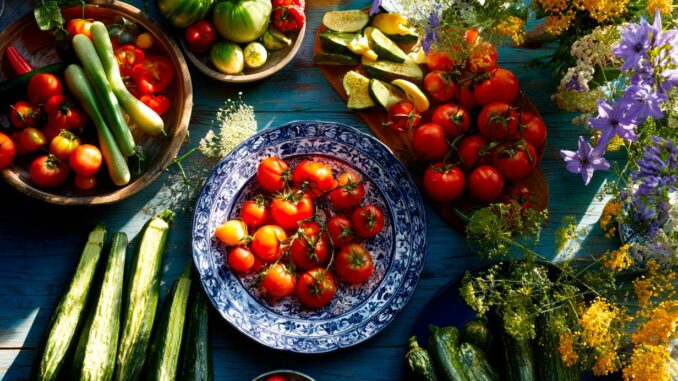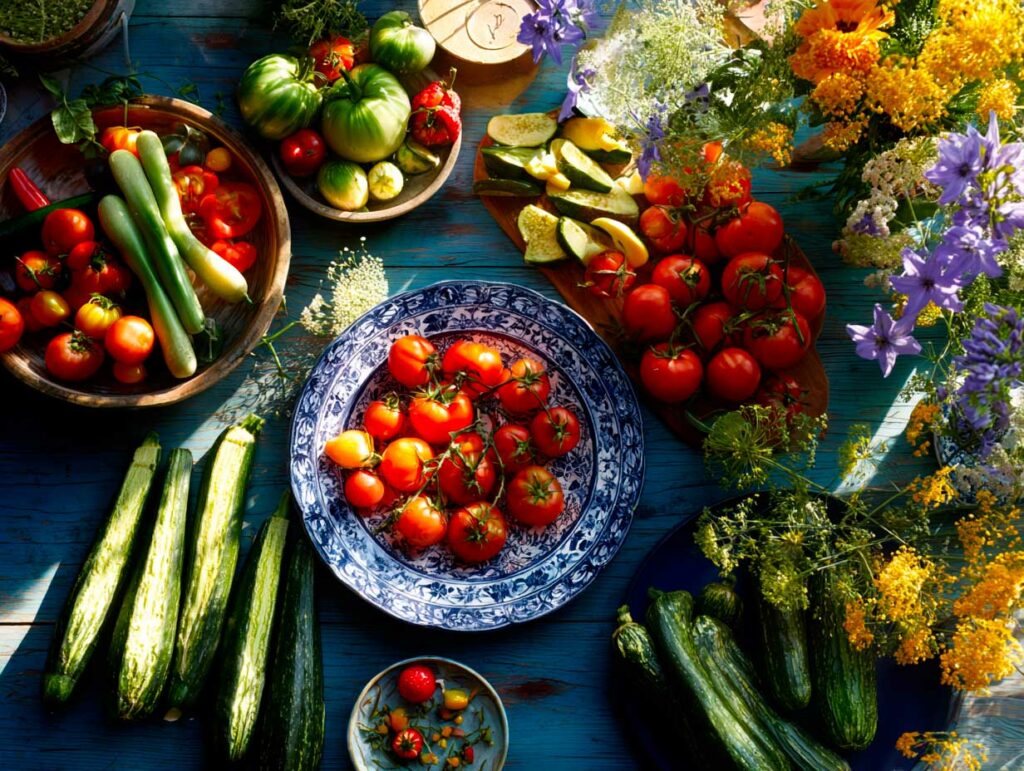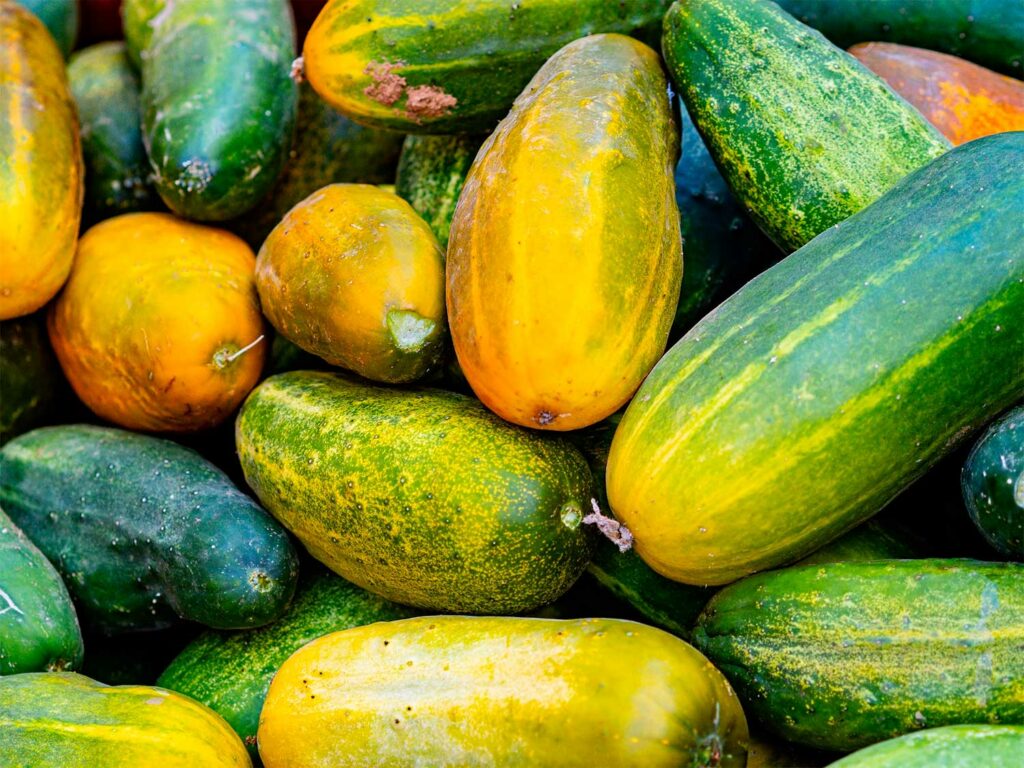
Discover the essence of French cooking through seasonal produce, regional traditions, and sustainable practices that define French gastronomy.
Seasonal cooking lies at the heart of French cuisine, shaping its identity and reputation worldwide. Rooted in respect for nature’s cycles, it emphasizes the use of fresh ingredients harvested at their peak flavor and nutritional value. This approach connects gastronomy to the land, showcasing the diversity of regional products while promoting sustainability and supporting local farmers. From crisp spring asparagus to robust winter root vegetables, seasonal ingredients influence not only the dishes but also the cultural rhythm of meals. Exploring seasonal French cooking offers insight into how food, tradition, and the environment come together in one of the world’s most admired culinary traditions.
The essence of seasonal French cooking
Seasonal cooking is more than a trend in French food culture; it is a guiding principle that dates back centuries. Before globalized supply chains, French households and chefs naturally relied on local and seasonal produce. This practice has endured, as it delivers ingredients at their best flavor and nutrition.
By following the calendar of nature, cooks select fruits, vegetables, meats, and seafood when they are most abundant and affordable. This approach ensures dishes are fresher, more vibrant, and aligned with regional culinary traditions. Classic examples include spring peas and asparagus in tender salads, summer’s ripe tomatoes and melons, autumn mushrooms and pumpkins for hearty stews, and robust winter leeks, cabbages, and root vegetables for comforting soups.
Seasonal cooking also reflects the cultural rhythm of French gastronomy, where certain dishes—such as cassoulet in winter or berry tarts in summer—are tied to specific times of the year. By embracing seasonality, French chefs preserve authenticity and strengthen the connection between cuisine and terroir.
Regional specialties and their seasonal roots
One of the strengths of French gastronomy lies in its rich regional diversity. Each region boasts its own specialties, often closely linked to seasonal ingredients and local traditions.
In Provence, the summer markets overflow with tomatoes, courgettes, and fragrant herbs, inspiring dishes such as ratatouille and grilled vegetable tarts. Brittany’s cool waters yield autumn oysters and winter scallops, while the southwest celebrates seasonal foie gras, wild mushrooms, and chestnuts in the autumn months. The mountainous regions of Savoy and Jura depend on winter milk for rich alpine cheeses like Beaufort and Comté, often enjoyed in seasonal dishes such as tartiflette or fondue.
These regional specialties not only highlight local produce but also underscore the importance of French culinary traditions in maintaining biodiversity. By respecting seasonality, local farmers preserve heirloom varieties of fruits, vegetables, and grains, ensuring that gastronomic heritage continues to thrive.
Health benefits of eating with the seasons
Seasonal cooking offers significant advantages for health and well-being. Fruits and vegetables picked at peak ripeness are typically richer in vitamins, minerals, and antioxidants than those grown out of season in artificial conditions or shipped long distances. For example, winter citrus provides a natural source of vitamin C just when it is most needed for immune support.
The varied diet that comes from eating seasonally also supports balanced nutrition. Spring greens offer detoxifying qualities after the heavier meals of winter, while autumn’s squash and root vegetables provide essential fiber and slow-release energy for colder months.
By focusing on seasonal produce, French cooking naturally aligns with dietary needs throughout the year. This harmony between the seasons and nutrition has long been a hallmark of French food culture, which emphasizes quality and balance over abundance.


Environmental and economic advantages
Seasonal cooking is not only better for taste and health but also for the planet. Using ingredients grown locally and in their natural season reduces reliance on energy-intensive greenhouses and long-distance transportation. This in turn lowers greenhouse gas emissions and supports a more sustainable food system.
Locally sourced seasonal produce often requires fewer chemical inputs such as fertilizers and pesticides, helping preserve soil health and biodiversity. Furthermore, by buying from local farmers, consumers sustain regional agriculture and rural communities.
There are also economic benefits. Seasonal ingredients are usually more affordable because they are abundant and do not incur high transportation costs. In traditional markets across France, shoppers can enjoy vibrant seasonal produce—such as spring strawberries or autumn apples—at lower prices compared to imported goods.
The emphasis on seasonal cooking thus supports not only the principles of sustainable gastronomy but also the cultural and economic vitality of rural France.
How to cook seasonally at home
Adopting seasonal cooking at home is simpler than it may seem. The first step is to plan meals based on what is available in local markets rather than relying on a fixed year-round menu. French home cooks often draw inspiration from market stalls, selecting the freshest ingredients of the day.
For spring, think of light dishes such as pea and mint soup or strawberry and rhubarb tarts. Summer calls for vibrant salads, tomato-based ratatouille, and fruit desserts like clafoutis. Autumn brings risottos with wild mushrooms or roasted pumpkin soups, while winter favors hearty stews with root vegetables, cabbage, and leeks.
Equally important is learning how to recognize high-quality produce. Choose fruits and vegetables with firm texture, vivid color, and pleasant fragrance. Prioritize products from local farms and producers, whose goods often carry protected origin labels reflecting their quality and authenticity.
Cooking in tune with the seasons not only enriches everyday meals but also fosters creativity in the kitchen by encouraging adaptation to the changing bounty of nature.
Seasonal cooking in French culinary education
Learning to cook with seasonal ingredients is central to the philosophy of many cooking classes in France. Whether in professional culinary schools or in workshops for enthusiasts, instructors emphasize how to select, prepare, and showcase seasonal produce.
These classes often begin with visits to local markets, where participants discover regional specialties and meet the farmers and artisans behind them. Students learn how to transform simple ingredients into refined dishes, respecting traditional techniques while embracing modern approaches to sustainability.
For visitors to France, joining such a class is an immersive way to experience French gastronomy. Beyond mastering recipes, it offers insight into the cultural significance of food and the role of terroir—the unique relationship between land, climate, and tradition—in shaping flavors.
By promoting seasonal cooking, these programs preserve culinary heritage while preparing future chefs and home cooks to adapt responsibly to evolving environmental challenges.
The enduring value of seasonal gastronomy
The practice of seasonal cooking remains one of the cornerstones of French culinary heritage, linking the nation’s famed cuisine to its landscapes, climate, and culture. It ensures that food remains vibrant, meaningful, and respectful of nature’s cycles.
In a world of globalized supply chains and year-round availability of almost any product, embracing seasonal produce stands as an act of both cultural preservation and environmental responsibility. It reminds us that French food culture thrives not on excess but on the quality, character, and integrity of its ingredients.
As more chefs, home cooks, and travelers embrace this philosophy, seasonal cooking continues to serve as an inspiration for sustainable practices worldwide—offering a timeless lesson from French gastronomy on how to live, eat, and celebrate in harmony with the seasons.
Cook in France is your independant source for food in France.